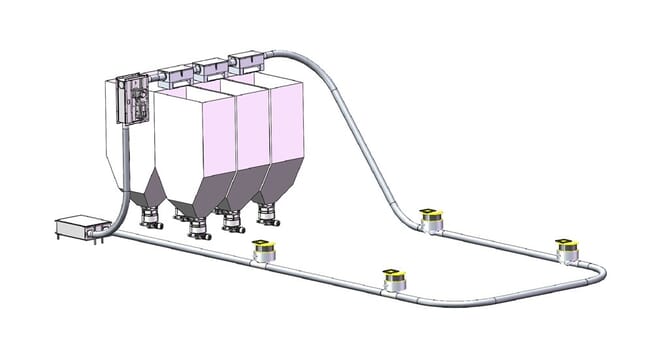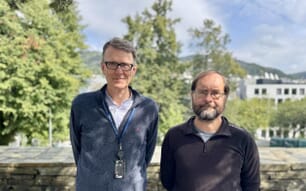Usually individual cages are connected to one specific silo via a feed line but this can require a lot of time to move feed from one silo to another if you need to deliver special feed to the cage.
“With the Flexible Feeding system, feed is fetched from a selected silo to a buffer tank, and then into the cage. This makes the feeding process much more efficient and makes it much easier to use several feed types, different pellet sizes and the like,” says Jan Rune Erikstad, who developed the system. He points out that this system also addresses challenges associated with the ballasting of feed barges, by having a complete overview of how much is sent from which silos to the buffer tanks.

“I am of the belief that at least 50 percent of all new barges will have this system in the future,” he adds.
The system is not yet commercially available, but feedback for the concept has been positive, following testing at Alsaker Fjordbruk, which started at the beginning of July.
“We are very positive about this system. By all means, there have been some issues, as with all new technology, so I do not want to brag too much just yet, but I am confident that AKVA group will find solutions for the challenges. Then this system will be a real time-saver for the aquaculture industry, and be positive for both the employees and the fish, as well as the bottom line,” comments Hans Helge Vik, Production Director at Alsaker Fjordbruk.
Flexible Feeding is currently being installed at two other selected customers, so that AKVA can get feedback on how it works and make adjustments if needed. In addition, an in-house test lab is being developed for carrying out troubleshooting and improvements before it is made commercially available next year.

